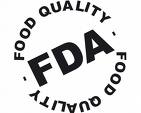
The paradigm to determine the patentability of inventions involving nanotechnology and biotechnology continues to evolve due to the Supreme Court deciding the case of Bilski v. Kappos, 2010 WL 2555192. The Court heard oral arguments on November 9, 2009, and the opinion was issued on Monday, 28 June 2010.
The trouble for Bilski began when he and his business partner, Warsaw, applied for a patent on a computerized method for incorporating weather information into the speculation of future prices of commodities and energy costs (business method). The claim was denied by the Patent and Trademark Office (PTO) for lack of patentable subject matter (process), and the denial was affirmed in subsequent appeals to the PTO and the Federal Circuit. The Supreme Court decision affirmed the denial of the business method’s patentability, but it simultaneously held the test, utilized by the Federal Circuit, for determining if a process is proper patentable subject matter was not the exclusive and sole determining factor. Going forward, this decision will have a major impact on what constitutes patentable subject matter (the first hurdle on the road to a patent being issued), including those discoveries that have helped to fuel the explosion of cutting-edge bio/nanotechnology.
BACKGROUND OVERVIEW
Throughout the litigation history, the focus was squarely on the ‘machine or transformation’ requirements articulated by the PTO and further solidified by the Federal Circuit. The court relied on the two prong test set forth in Gottschalk v. Benson to determine whether a process claim is tailored narrowly enough. “A claimed process is surely patent-eligible under § 101 if: (1) it is tied to a particular machine or apparatus, or (2) it transforms a particular article into a different state or thing.” The Federal Circuit outlined the task at hand, “It is undisputed that [Bilski’s] claims are not directed to a machine, manufacture, or composition of matter. . . . Thus, the issue before us involves what the term ‘process’ in [the law] means, and how to determine whether a given claim . . . is a ‘new and useful process.’” Essentially, the legal issue generating all the consternation and strife is: “[W]hat test or set of criteria governs the determination by [PTO] or courts as to whether a process is patentable?” The Federal Circuit opined that a process is not patentable subject matter unless it exactly conforms with the ‘machine or transformation’ test.
THE SUPREME COURT
The Supreme Court agreed to hear the case, but rarely hears a case from the Federal Circuit to explain that they reached the correct and appropriate conclusion. Quite to the contrary, the Supreme Court seems to take case after case in the patent area to fix a wrong perpetrated by the Federal Circuit. This tension has been in place for quite some time.
At oral arguments before the Supreme Court, Justice Sotomayor voiced concern over the harsh majority opinion of the Federal Circuit:
How about we say something as simple as patent law does not protect business matters instead of what the Federal Circuit has begun to say, which is technology is tied to a machine or a transformation of the substance, but I have no idea what the limits of that ruling will impose in the computer world, in the biomedical world, all of the amici who are talking about how it will destroy industries?
That sentiment reverberated in the unanimous majority opinion whereby the ‘machine or transformation’ test was relegated to the role of a helpful clue in determining whether or not a process is patentable subject matter. Essentially, the Court rejected the Federal Circuit’s exclusive reliance on the bright-line rule and threw the proverbial ball back into their court to develop an appropriate test. The bottom line, as it stands now, is that patentable subject matter is still quite broad, and the analysis to determine it includes the ‘machine or transformation’ test as one criterion with regard to processes, but it no longer is the sole deciding factor.
ONWARD
If the Supreme Court had required strict adherence to the machine or transformation test, it would have had seismic implications for patents already issued, and certainly would have caused trouble for pending applications relating to biotechnology and nanotechnology. The trouble arises from the precarious position that biotech and nanotech patents are not theoretically involved with either a machine nor do they transform matter. Generally speaking, they are processes involved with analysis, diagnosis, treatment or some type of function. Notable examples are those nanoparticles involved in drug delivery. Even though the particles behave differently at the nanoscale level, they essentially are not transformed or part of a machine and would thus fall outside patent protection under the rigid Federal Circuit test. Now, there is a least the possibility for these types of inventions to move forward in the process of patentability.
Ultimately, the parties in Bilski did not receive the patent on the specific business method that was applied for; however, the patent world at large was able to avoid the strictures of the rigid, bright-line ‘machine or transformation’ test utilized by the Federal Circuit . In essence, the fields of nanotechnology and biotechnology research and development dodged a catastrophic bullet. In the coming weeks and months I plan to return to this discussion in relation to emerging technology, especially after the PTO, practitioners, judges, and legislators have had time to digest the nuances of this landmark decision.
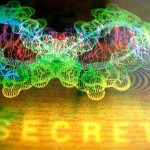
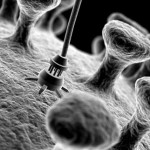
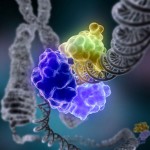
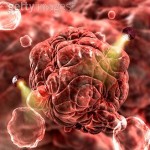 The University of Buffalo recently unveiled a dramatic development in the nanotech realm. Through the use of magnetic nanoparticles it is possible for scientists to “remotely control ion channels, neurons and even animal behavior.” There are many possible real-world applications of this technology including targeted cancer, diabetes, and neurological disorder treatments.
The University of Buffalo recently unveiled a dramatic development in the nanotech realm. Through the use of magnetic nanoparticles it is possible for scientists to “remotely control ion channels, neurons and even animal behavior.” There are many possible real-world applications of this technology including targeted cancer, diabetes, and neurological disorder treatments.
